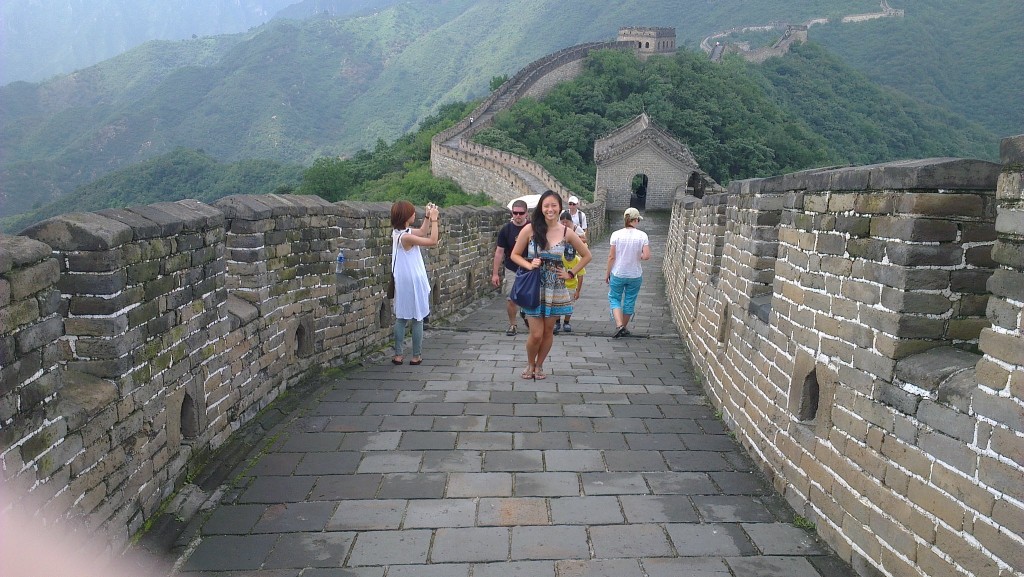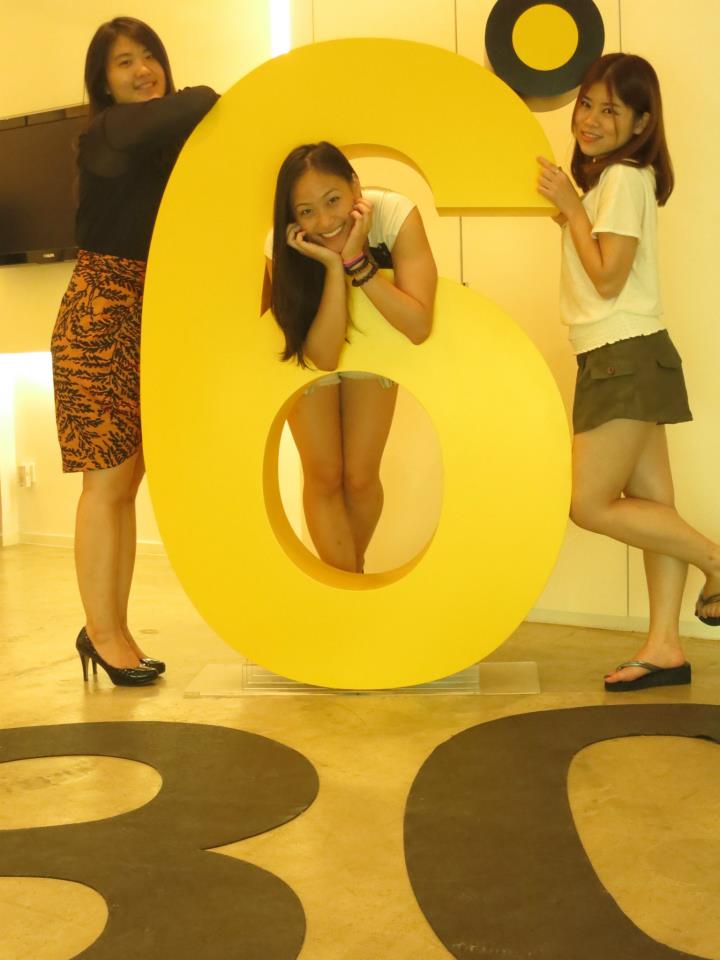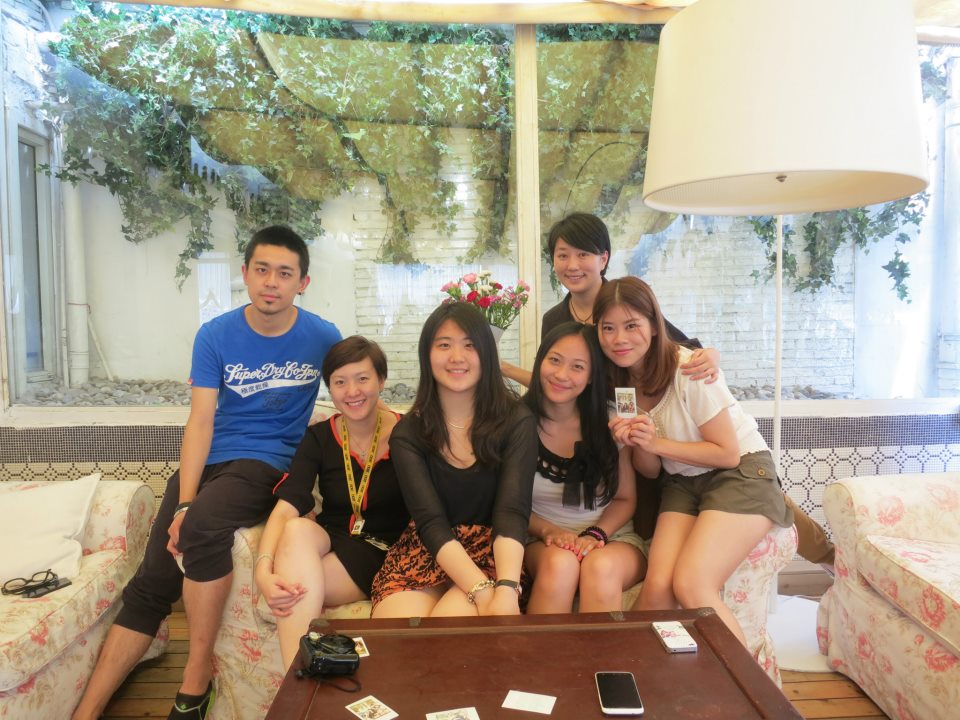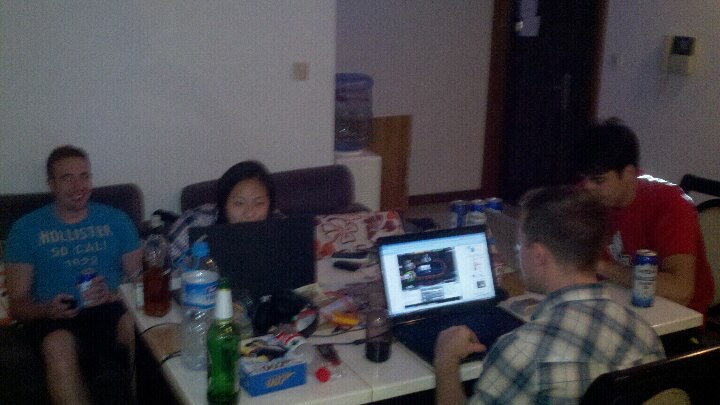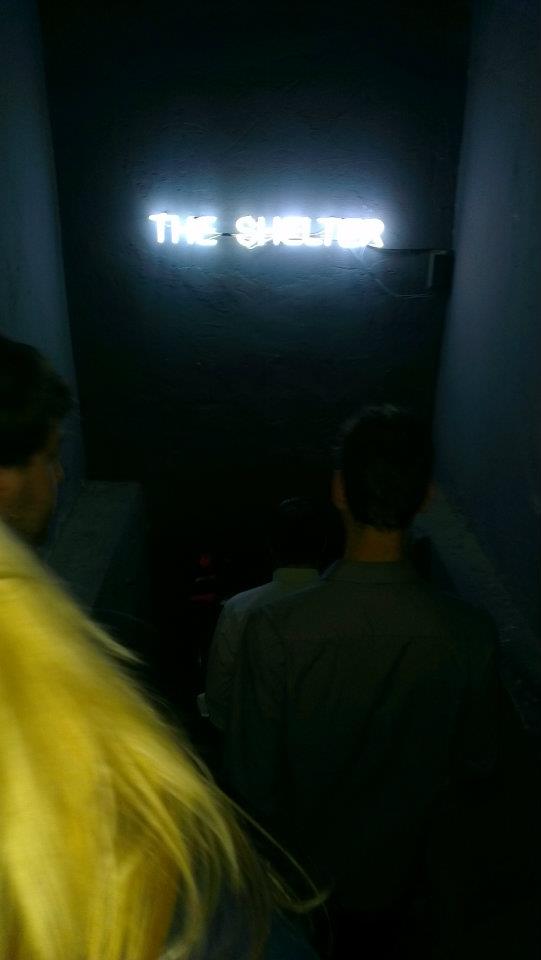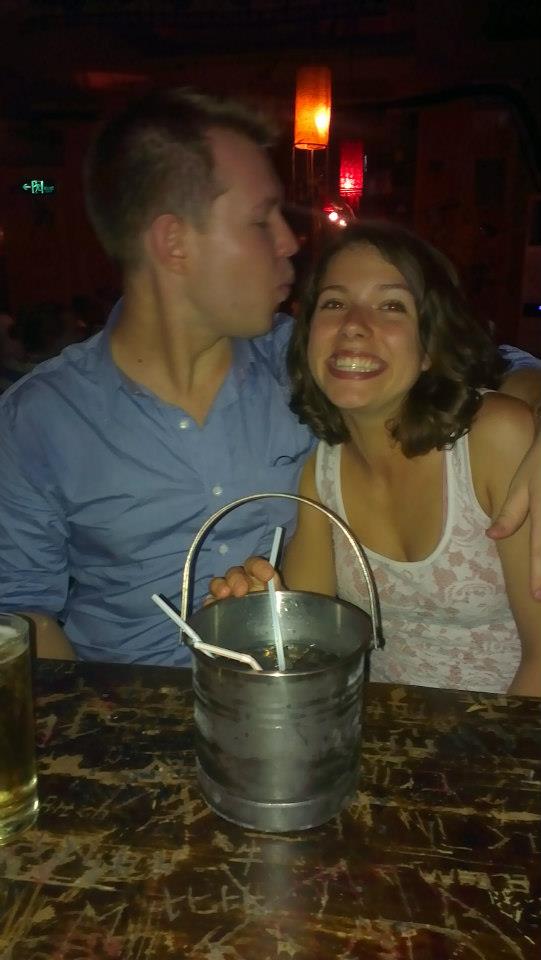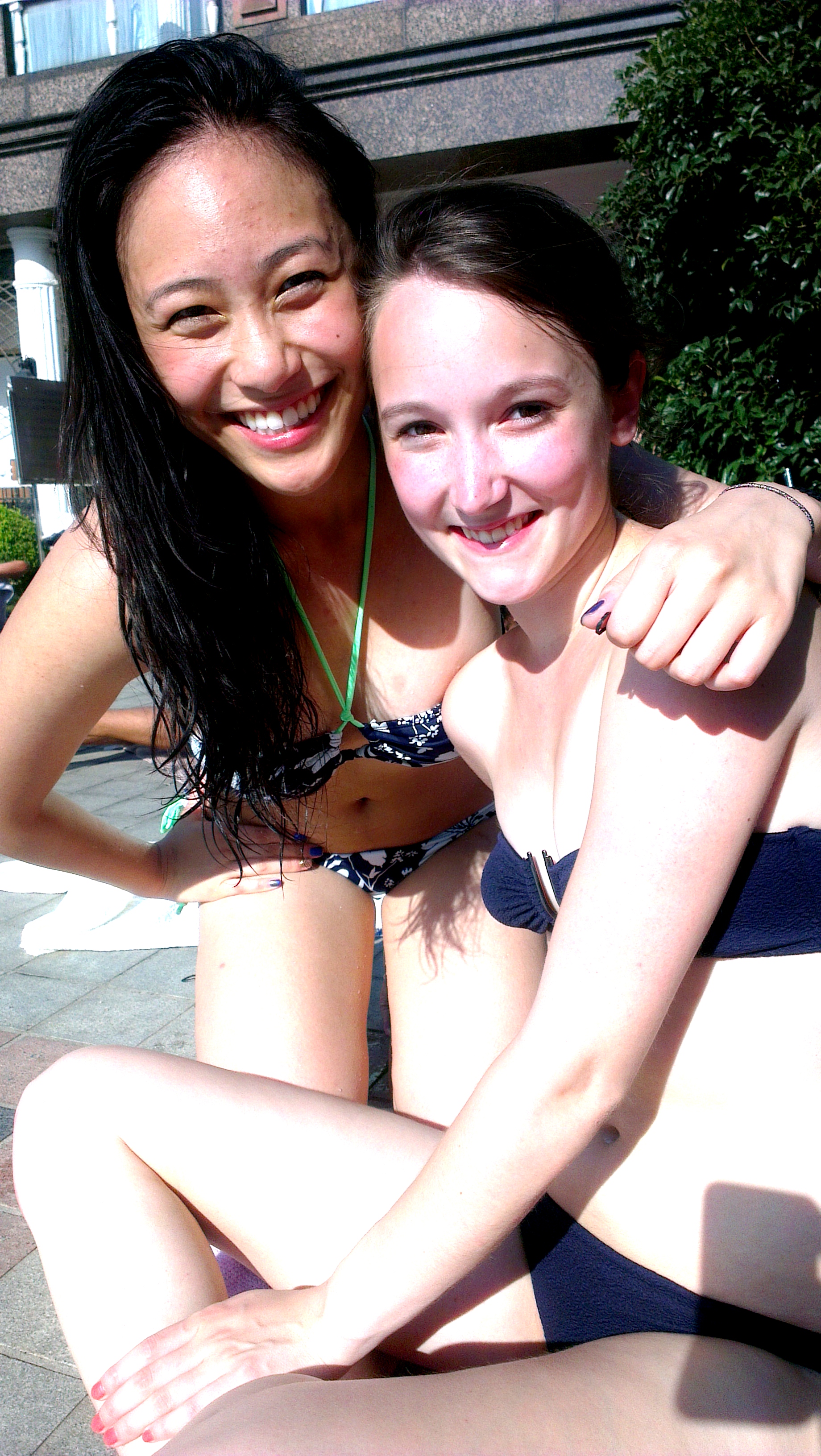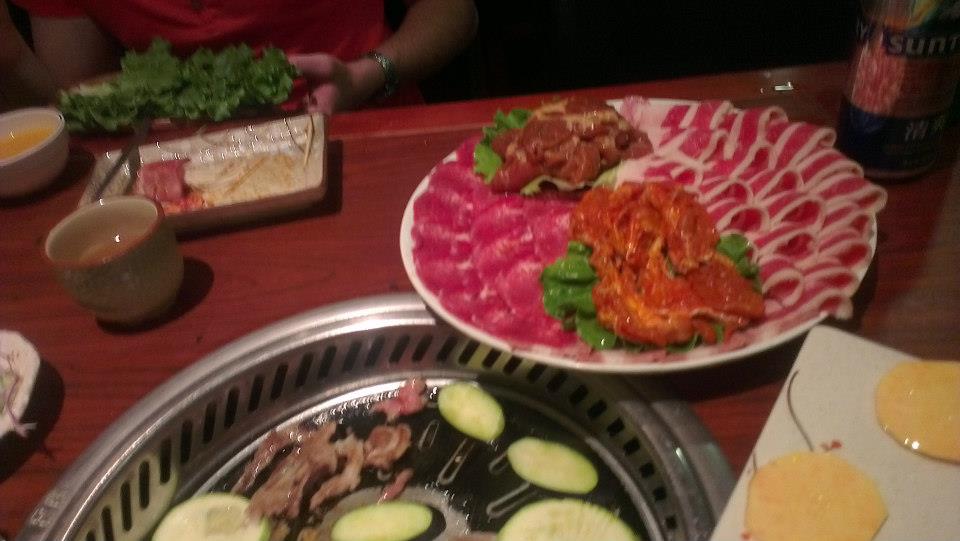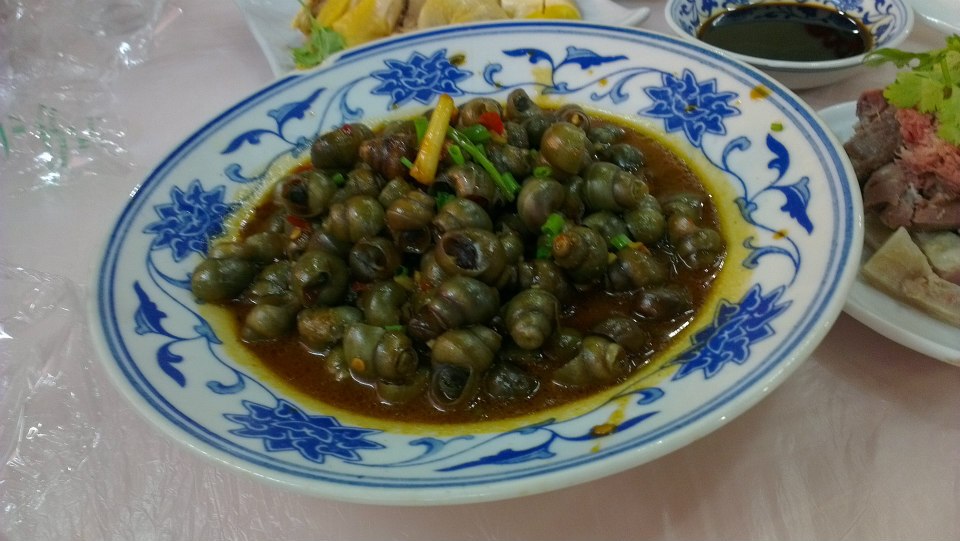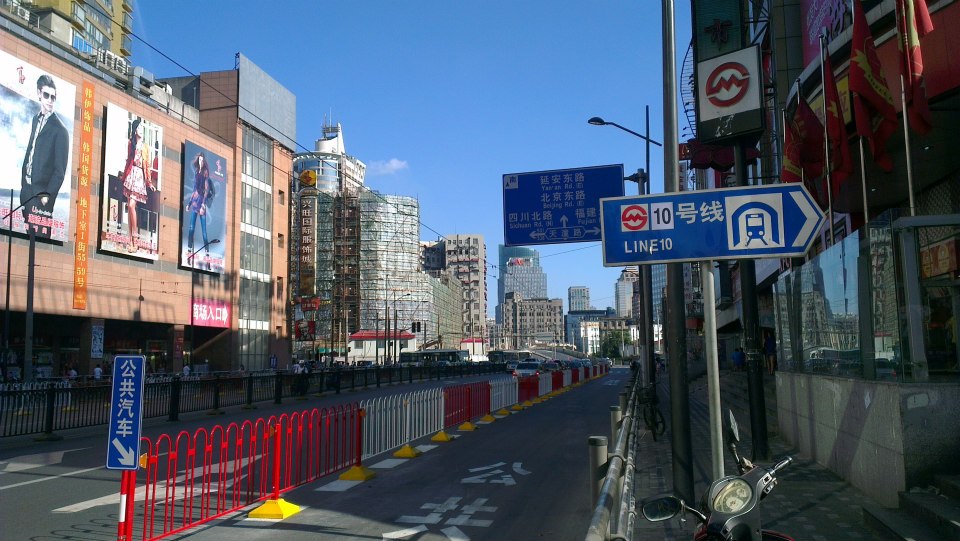Brand Architecture Building: A Step-by-Step Guide (Step 1)

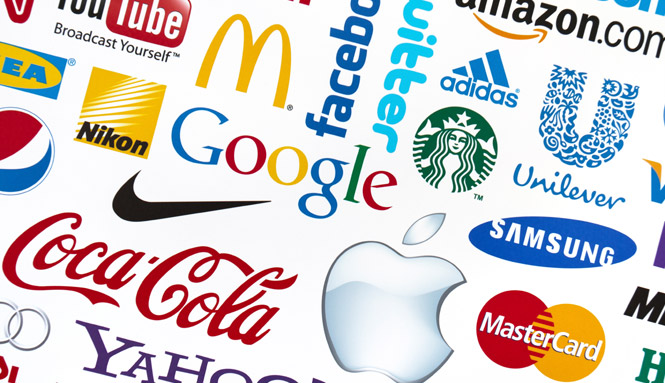
What counts as a sub-brand? How can I make it easier for the consumers to navigate my offerings? Heck, what is a brand, really? If you’re asking these questions, you are not alone. This is a live challenge I am facing at work, and I wanted to share my key branding insights in a multi-step case study. Let’s do this!
Step 1: Understand what a brand really means.
Before we define a brand architecture, let’s wrap our heads around what a brand really is. I have developed a formula to help tell the brand story:  Let’s break this down. Id, ego, and super-ego, as defined by Sigmund Freud, are the three components of human psyche that govern the way you think and make decisions. The id is present with us when we are born, and represents our basic human drive: the unorganized instinct and sometimes irrational impulse. An entity is simply the item, service, or person that is the subject of branding. Is it your personal brand? A corporate identity? A product or service? When you give birth to a brand, you must first think of your entity’s id – peel back the layers of beautiful design, extraordinary functionality, and your price tag. What are you left with? On first impulse, what is the fundamental word that breathes life into your brand?
Let’s break this down. Id, ego, and super-ego, as defined by Sigmund Freud, are the three components of human psyche that govern the way you think and make decisions. The id is present with us when we are born, and represents our basic human drive: the unorganized instinct and sometimes irrational impulse. An entity is simply the item, service, or person that is the subject of branding. Is it your personal brand? A corporate identity? A product or service? When you give birth to a brand, you must first think of your entity’s id – peel back the layers of beautiful design, extraordinary functionality, and your price tag. What are you left with? On first impulse, what is the fundamental word that breathes life into your brand?
INDULGENCE
SPEED
BALANCE

As if it were not obvious already, id and entity make up the word identity, and that is the final piece of the puzzle. A brand is an identity – it’s an embodiment of your core offering, a definition of your entity, a way to link associations together, and a promise from you to the world to hold yourself accountable for delivering your core offering.
Only when you understand what makes up your identity will you be able to build a powerful, believable brand!
NOURISHING
I have chosen the word nourishing to represent the corporate brand because of two reasons – 1) Nature’s Path Foods products are delightfully nourishing – both good tasting and good for you. They choose nourishing, superfood, organic ingredients that you can trust to put in your body. 2) Nature’s Path Foods is also about enriching the community and the land, giving back to everything that has made the company what it is today.
Stay tuned for Step 2.
Affordable “Snare” Act: ObamaCare Website Fails to Launch
Something’s on the roast, but it’s not Thanksgiving turkey. After a complete failure in its official launch last month, Obamacare’s HealthCare.gov is under tremendous public criticism. Will this project burn to a crisp, or is there a way to salvage it?
Signed into American legislation on March 23rd, 2010, the Patient Protection and Affordable Care Act is a national health care reform aimed at changing the future of the American health care system especially for the millions who previously could not afford it. The idea is to reduce government spending in and provide better, cheaper options of health care for all Americans. As part of this reform, affectionately referred to as “ObamaCare,” the online health insurance marketplace HealthCare.gov was launched on October 1st, 2013 that allows Americans to determine if they are eligible for government-subsidized coverage and compare prices on affordable, quality insurance.
So what went wrong at launch?
- The unanticipated flood of users interested in the website lead to a virtual “wait room” for all users who could not even log in due to massive lag and denied access.
- There were further glitches in the website that prevented certain payment transactions.
- The website was criticized for difficulty in navigation on top of the technical problems.
What was the damage of the unsuccessful launch?
- After one month of launch, only 106,185 Americans chose Obamacare out of all health insurance plans available and only 25.2% purchase through HealthCare.gov.[1]
- HealthCare.gov cost upwards of $600 million[2], more than triple the amount spent to build LinkedIn ($200 million).
What additional problems arose after the launch?
- On October the 20th, well over two weeks after the website’s launch, U.S. President Obama himself admitted to being disappointed at the website’s launch. The Department of Health and Human Services published a blog post acknowledging previous hiccups during the site’s testing and even promotional phases, and promised to bring in “the best and the brightest” to fix it. This provoked critics to disparage why that was not done in from the onset.
- Earlier this week on November the 26th, the Obama administration announced a one-year delay for small businesses in signing up coverage via HealthCare.gov and forcing them to go through offline enrollment while they fix the user functionality. [3]
So what actually went wrong?
This, of course, is a huge discussion. Aside from the political nature of this website, additional volatility surrounds the vast amount of stakeholders and uncertainty in predicting website usage. As expected, a lot of fingers have been pointed at different stakeholders, but it is still ultimately the U.S. government’s responsibility to establish a working website.
LACK OF AN OFFICIAL PROJECT CHARTER
This project bares similarity to the TAURUS project developed by the London Stock Exchange which failed because they were over-ambitious, tried to appeal too many stakeholders, and never clarified a starting point and ending goal. A clear project charter would have helped to clarify the stakeholders, requirements, timeline, and key objectives of HealthCare.gov, thereby eliminating scope creep and assigning accountability. Clearly outlining the project requirements and expectations across all contractors could have also aligned them towards a common set of goals and deliverables. They could have even outlined performance metrics or used an earned value management tool to track the progress of the project during development to keep both the budget and timeline tight. The result of not having a project charter? Overpromising and under-delivering.
OUTSOURCING METHOD WAS OVERLY COMPLEX
Given all the stakeholders HealthCare.gov had to address, the Obamacare website was already complicated enough without 55 different contractors. Out of the 55, CGI Federal was the main contractor, handling the Federally Facilitated Marketplace, QSSI lead the registration tool and data transfer service, Equifax verified the income data to determine eligibility to health care, and Serco handled paper applications[4]. Proprietary software was impossible to integrate, functionality and speed was not well considered, and communication was difficult to facilitate across all different parties. This unnecessary complexity lead to critical functionalities of the website being sub-par even at launch.
LACK OF CLEAR RISK MITIGATION STRATEGY
Not only was end-to-end testing held off until a couple weeks before launch[5], and even so the failed testing should have been a clear red flag, but even that was overlooked. Using a Risk Matrix could have been established even before the website launch to anticipate a proper mitigation strategy should the launch fail (which happened to be the case). Inability to handle more than peak load could have been one of these risks, and a simple solution would be waiting for the results on legal compatibility with Amazon Cloud Services to establish a central, scalable solution.
So what should they do now?
An initial failure to launch does not mean that the project cannot be salvaged. By establishing structure and seeking the right help, HealthCare.gov still has the chance to become a service Americans can be thankful for.
First and foremost, they need to seek the right help to help them get back on track. Aneesh Chopra, former White House CTO, suggests the Presidential Innovation Fellows to help pair the U.S. government with the “best and brightest” from the private sector with a track-record in restoring programs that have faced technical troubles like this. Finding one capable and experienced leader who knows politics, technology, and the healthcare industry is crucial in overseeing the IT project, and will help to centralize communication.
Second, they should develop project plan and management structure. Knowing the complexities in the backend working with an abundance of contractors and databases, managing all these parties in an effective way will help streamline the project delivery. All the time while developing the functionality, they must remember to anticipate risk.
Next, they need to get the website to function properly. This starts with gathering user feedback, prioritizing what to fix, and starting with guaranteeing the core functionalities of the website: “organizing insurance plans, assessing program eligibility, facilitating consumer enrollment.”[1] These are the “minimum viable product” for the website, or the bare minimum for the website to function.”
In the long term, after they finally launch a bug-free version website, HealthCare.gov should to consistently monitor the activity to ensure first response to unanticipated problems.
[2] http://www.washingtonpost.com/blogs/fact-checker/wp/2013/11/19/how-much-did-healthcare-gov-cost-part-2/?hpid=z2
The Business of Online Dating Infographic
Completed for my COMM 365 Market Research class. Spent about 3 days putting this together from research to design (in PowerPoint of all programs). While it isn’t perfect yet, I thought it would be neat to share! Here’s my two cents on the online dating industry.
Font Faves #1: Hipster Series
Well, someone had to do it! Here’s my super round-up of super hipster fonts. They are 100% free, of course, because… when do hipsters not like free things?
When hipsters make videos for Vimeo…

http://www.behance.net/gallery/Vintage-LogoInisignia-Collection-2/8997889
When hipsters make posters…

http://www.behance.net/gallery/Metropolis-1920/3244285
When hipsters teach kindergarten…

http://www.behance.net/gallery/Primary-Sans/9205391
When hipsters design magazines spreads…

http://fontfabric.com/code-pro/
When hipsters make scrapbooks…
http://www.behance.net/gallery/Musket-Free-Font/5535461
When hipsters write fashion blogs…

http://dribbble.com/shots/759587-COCO-Free-Fashion-Typefamily
When hipsters handwrite…

http://www.dafont.com/note-this.font
When hipsters meet the 50s…

http://juliuscsurgo.org/free-font-hipster/
When #hipsters caption their Instagram photos…

http://www.floodfonts.com/freefont/moby.html
When hipsters write books…


http://www.behance.net/gallery/Casper-Typeface/4919301
If hipsters opened a bar (besides robbing the liquor stores of all their Pabst)…

http://www.behance.net/gallery/The-Kabel-Font-free/1912005
When hipsters roll the end credits…

Chrome Extension Round-up Edition 1: Productivity
Uncover the Chrome potential – have you tried these Chrome extensions yet? I’ve round up some of the top productivity and time-saving extensions I’ve used or want to try (in no particular order):

1. StayFocusd
I’ve reviewed this extension before, but it has made it to my list. So what is this extension? StayFocusd restricts the time you can spend on certain websites, thereby increasing “productivity by limiting the amount of time that you can spend on time-wasting websites.” This proves to be useful during exam periods when you need to cut down the time you spend on Youtube, Facebook, Pinterest, or even email. If you want to cheat on the minutes you get after you run out, it takes many annoying clicks through tons of buttons before you’re allowed to make changes.
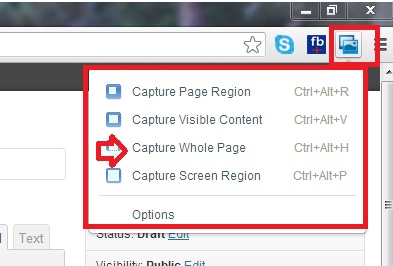
“Capture visible content of a tab, a region of a web page, or the whole page as a PNG image.” Great for materials you want to keep from websites to insert into PowerPoint presentations or reference materials for your papers. It has saved me so much time versus print screening and stitching together photos in Paint.
3. Pocket
When you see a useful page but don’t have time to read it all, hit the “Pocket” button to save the page and view it later. “It automatically syncs to your phone, tablet or computer so you can view it at any time, even without an internet connection.” It’s kind of like a Pinterest for websites, except it’s for your personal use.
4. LucidChart
For my friends in BTM, TLog, or engineering, I’m sure you’ll have to do a lot of flow charting. Google Drive apps are kind of annoying to create diagrams, as you need to create a drawing and add shapes. LucidChart is “the easiest way to draw flowcharts, mockups, UML, mind maps and more. Work together in real time with your team and clients.”
I’ve looked for things like this forever. If you’re in need of a virtual meeting, perhaps give this a try to “discuss design, brainstorm, work on projects, make mindmaps and use it in education.” Only downside (?) is that everyone will have to install it. Similar ones include: Conceptboard, TeamBox, Orchestra and more.
Bonus: BucketListly
This app just sounds like a blast. “Bucketlistly will turn your life into a game. Complete and share your ‘achievement unlocked’ moments with your friends fast and simple.”This has more to do with productivity outside of work or school life, but it is a motivating way to keep track of all the things you want to do. We all get a sense of satisfaction from ticking off a box.
What is your favourite app or extension? Leave a comment below 🙂
The “Canada Goose Phenomenon”
Raised in B.C. Canada, I had no idea what the Canada Goose brand was. After making a few trips out to Toronto, I was exposed to the brand for what I thought was the first time. Walking down Yonge Street near Dundas Square, I was intrigued to see many pedestrians wearing thick parkas and jackets with the fluffy fur hood and a circular logo stitched into the arm. The experience literally looked like this (caution: profanity in video):

I needed to know what brand it was. At one point, I was so curious that I snuck up beside a stranger to look at what the logo read. Here is what I saw:

Canada Goose is a Canadian company founded in 1957 that manufactures outdoor clothing. They started fulfilling custom orders for jobs in frigid conditions that required high quality and warmth retention. On top of maintaining consistency in being the best of style and performance, the jackets started out being worn by Arctic explorers and high-altitude mountain climbers. The trend caught on after celebrities were spotted wearing these coats in movies and on the streets. Their signature coats today nestle in a sweet spot between fashion, luxury, and utility, using coyote fur for hood trims and white duck down filling. Since 2005, Canada Goose claims revenues of more than $225 million in coats and accessories across Canada, and that doesn’t include the millions of lost revenue from mass counterfeiting. The craziest part of this phenomenon are that these jackets sell anywhere from $350 to $885.

Young CEO and entrepreneur, Dani Reiss
Looking at this phenomenon from a marketer’s point of view, there are really a few different consumer behaviour concepts at play here:
1) PHYSICAL AND PERCEPTUAL POSITIONING
The big blow-up in fashion trends started after being featured in multiple movies like The Day After Tomorrow, Eight Below, National Treasure, Good Luck Chuck and Whiteout where actors in extremely cold and harsh environments were seen wearing these high-performance parkas. Since then, many celebrities have been spotted wearing these jackets too. Eventually, students in Toronto caught on to the trend and began sporting their very expensive coats to school. Using a combination of physical positioning with its insulating layers, hand-warming pockets, and warm fur hood, and perceptual positioning techniques aforementioned, these jackets have become a fashion staple for Torontonians, much like Uggs, Hunter rainboots, and black tights are to Vancouverites.

Drake wearing an all-black Canada Goose parka.
2) SOCIAL PROOF AND MERE EXPOSURE
I must admit, I found myself a victim. At first, I found the jackets pretty typical; however, after seeing everyone all the time on the streets and in magazines with these jackets, I ended up wanting one myself. Many people would agree, and have worked countless hours waiting tables to pay for these jackets. I looked at what other people were wearing, was exposed to a lot of it, and eventually started perceiving an increase in the validity of the brand as more and more people support the brand.

Nicolas Cage in National Treasure wearing a Canada Goose parka.

3) SOCIAL MARKETING AND MISATTRIBUTION OF AROUSAL
Canada Goose partnered with Polar Bears International to create an exclusive line which donates a percentage of proceeds to save the world’s endangered polar bears, a representative symbol for Canada. A lot of supporters of the Canada Goose brand are happy and boast that by buying Canada Goose, they have helped a polar bear in need and feel good about it. While the charity is a good cause, Canada Goose does unfortunately use animal fur in some of its parka production. The social marketing technique is a great selling point, but people have perhaps wrongly projected positive feelings onto the brand.

Canada Goose’s success really branches out from creating an amazing brand, telling an authentic story, and using ingenious product placement. The funny thing is that Dani Reiss, the CEO of Canada Goose, does not claim to be a “brand guy” or businessman. As the leader, he really made some great decisions, first and foremost in sewing on “Made in Canada” tags that add to the jacket’s premium pricing and believable brand.
Macklemore’s Thrift Shop affects Consumer Behaviour…?

Macklemore
Who hasn’t heard of Macklemore’s 99-cent leopard mink coat from his smash hit, Thrift Shop?
“Vintage” is the new class.
After the financial crisis in 2008, there seems to be a large rise in price sensitivity amongst consumers. Even thrifting, an endearing abbreviation which modern-day hipsters have coined for thrift shopping, has transformed from a shameful to shameless activity. Celebrities have been advocating it in music videos like Thrift Shop, in sitcoms like 2 Broke Girls, and even in fashion magazines like GQ Magazine. YouTube personalities and beauty gurus have also been showing off their great buys and pretty looks using drugstore, on sale or thrift store items. Heck, as someone who had never thrifted before, I have even gone out to find some clever buys of myself. And, as I did so last Friday after studying for my consumer behaviour midterm, I had the sudden realization that I had been subject to a form of observational learning.
There are four conditions to modelling, which is a significant type of observational learning. In “self-diagnosis,” I found that I managed to satisfy all of them:
- ATTENTION: the model must be desirable to emulate: I followed and took note of the trend amongst big time celebrities in pop culture, beautiful makeup and beauty gurus on YouTube, magazine guides, friends who come back with awesome clothes
- RETENTION: the consumer must remember what model says or does: magazine guides give you the “top 3 rules to keep in mind while thrifting”
- PRODUCTION PROCESSES: the consumer must convert information into action: I went out to an actual thrift store to try out those tips
- MOTIVATION: the consumer must be motivated to perform these actions: I felt motivated because… well hey, who wouldn’t like to get trendy clothes for a fraction of the price? It’s what I like to call a guilt-free deal-steal. It gave me a kind of thrill, and I would do it again.
I learned, through observing the personalities that I follow online and my peers, that thrift shopping is the new, “in” thing to do, and throughout this time, I have not even seen one single thrift shop advertisement. In hindsight, it could almost be a type of negative reinforcement created unintentionally by social pressures; in this era, you are applauded for a clever, thrifty purchase and have also avoided the unpleasantness of overpaying.
Who knew that marketing could be applied in such a non-conventional way!
Internships Abroad: A Shanghai Experience
A lot of Sauders have been asking me about what I did to land my internship last summer at DDB China Group in Shanghai. I originally wasn’t going to post another one of my “journal entry blogs,” but since interest has been peaking as the end of another school year approaches (although not quite as soon as we’ve hoped), here it is.
China has always been a must-visit place on my bucket list. Part of the reason is actually quite fascinating, and it comes from the story of my family. During the Chinese Civil War in the late 1940s, my grandparents fled from China to the island of Taiwan not knowing that they wouldn’t see their family again for decades. China and Taiwan both enforced travel bans until 1987, and by the time my grandparents returned, they were not faced with all-good news. As a result, the generations that ended up settling down in Taiwan never got a chance to meet their same generation in China. My grandparents have since passed away, and from that point on I have always vowed to visit the land and meet my kin, a generation I never thought I would have a chance to meet. Personal story aside for now, let’s get straight to the internship details!

During the summer of 2012, I had first applied through the Catalai China Programme for an internship. TIP #1: ALWAYS APPLY AT LEAST 1.5 MONTHS AHEAD OF WHEN YOU WANT TO START YOUR INTERNSHIP. Typically, programmes will need a month to process your application, place you, help you with your accommodation, plane tickets, and visa. I got through to the Skype interview, but didn’t get through to the next round. I remember one of the main questions my interviewer asked was: “Why should we hire you if you don’t have any work experience?” That question is a real bummer to hear. We all want to get somewhere, so that’s why we wanted to start with summer internships in the first place.
Crushed, I turned to the one trusty mentor that never fails me – Google. That’s how I came to find Next Step Connections, a guaranteed internship placement programme. TIP #2: IF YOU DON’T HAVE ANY WORK EXPERIENCE, TRY A GUARANTEED PLACEMENT PROGRAMME. Some people at this point think, “wow, guaranteed placement? That’s for people who come in second place.” Not true. With a guaranteed internship placement, not only do you get to choose the industry and even specific companies you’d like to work for, but you are also guaranteed satisfaction with the placement for a week into your term. Application was simple; they did everything online, and then facilitated placement via e-mail:
1- Submit your application
2- Application confirmation and review
3- Application acceptance and deposit payment
4- Internship Placement Process
5- Internship confirmation
6- Program information (Visa, Housing)
7- Arrival information (Flights, Arrival day)
I chose my industries, indicated a preferred length of stay of 1 month, and chose the Standard US$ 3,150 program (your final payment may differ, as mine did slightly) standard and comprehensive programs differ in that they offer Chinese lessons). The standard includes internship, airport transfer, accommodation, social events, cellphone card, transportation card, visa, insurance and support. After that, I paid USD$450 to “put my foot in the door,” refundable if placement does not occur. The next step is the fun part – choosing an internship. Again, I consulted my trusty pal Google for the top ad agencies in the worlds. Of the ones that had offices in China, I initially specified DDB Global, Grebstad Hicks, Going86 and Avant Capital with no idea what to expect. I ended up getting a confirmed offer for a 6-week internship in Shanghai, China with Doyle Dane Bernbach (DDB) China Group, which is one of the world’s top advertising agencies and marketing communications networks.
What I liked best was definitely the corporate culture and the people there. You see everyone with black hair here, but we actually spoke mainly in English. TIP #3: DON’T BE INTIMIDATED THAT YOU CAN’T SPEAK CHINESE. MOST COMPANIES WELCOME AND WANT FOREIGN (ESPECIALLY ENGLISH-SPEAKERS) TO ADD DIVERSITY AND INSIGHT, AND MOST OF THEM ARE GLOBAL. DDB assigned me as a PR Intern, but what I liked about them is that they didn’t restrict me to my title. I got to explore many things beyond just that. DDB’s office was beautiful, and located near many other creative agencies where my good friend happened to be interning too. On top of that, they were undergoing some corporate and system changes at the time, so it was so interesting to be a part of the change. I was at the offices from 9AM – 6PM, plus I lived only 3 metro stations away which was pretty awesome.
So what was the non-job experience like?
Here, you can see a really blurry picture of the den with my neighbour, roommates and I. Because of the nature of these internships, people come and go pretty quickly. I happened to be one of the “newbies” as most of these guys had been around for way more than a couple months already. They had cleaning ladies that came in to clear our garbage, and there was one washing machine that… “got by”. Other than that, pretty good. TIP #4: MAKE SURE TO SET UP VPN (UBC OFFERS A FREE ONE) SO YOU CAN OVERRIDE THE BIG BROTHER CENSORSHIP. IT IS NOT A MYTH THAT THEY CAN BLOCK YOUR FACEBOOK. I have to admit, I was mildly afraid that I was the only girl in an apartment of 4. However, I ended up getting the biggest room with my own bathroom and balcony, which rocked my fun socks.
Oh, and these roomies… what to say about these roomies. They were so freaking amazing. From the moment we first met, they were all so nice and took me everywhere. They knew so much more about the place than I as a Mandarin-speaker could ever know. So what did we do? Well, the first night we hit up Shelter (a re-purposed bomb shelter), The Apartment, Kartel, and 88. Epic fun. TIP #5: YOU CAN CHECK WWW.SMARTSHANGHAI.COM OR PUBCRAWL SHANGHAI FOR PLACES TO GO AND SPECIAL EVENTS. We also ended up going to places along Huaihai, the Bund, Luwan… you name it. Some favourites were Zapata’s (free margaritas for girls_, I Love Shanghai (absinthe shots), Windows (beer pong, pool), Perry’s (hookah, massive buckets of alcohol for cheap – check out the pics, I put my signature up and tweet me yours when you sign it @yowen_song) and other hot spots included Bar Rouge, Mint, The Geisha, Muse, M2, M3, Shiva… etc. There was also a really cool laser tag bar we went to, which was kind of close to a bowling place. There are so many other fun things to do if you look online. The programme also schedules social events where you can eat your guts out for free or have fun drinking a beer at an outdoor pool, so be sure to go to those.
Of course, who can forget about the food? Dun Dan (steamed egg that tastes like tofu), jian bao (fried meat buns), post-club skewer stands, hot pot, curry… That and a lot of Korean BBQ… yum. Grilled bananas, cow tongue, and grape soda. I chewed on some sugar cane, and ate some pretty neat things, like snails.
I also encourage you to go on trips with the other interns you make friends with. Going in big groups is great to get cheaper hotel/hostel rates, food, and transportation.I ended up going to a couple different places, including taking the high speed rail down to Beijing to see Mao and the Great Wall of China and living in my first hostel! TIP #6: DOESN’T HURT TO BRING ALONG SOMEONE ON YOUR TRIPS WHO CAN SPEAK FLUENT MANDARIN/READ CHINESE. A lot of last minute changes can happen when you plan your own trips, and asking for/giving directions is so difficult otherwise. I don’t know if this qualifies as a tip, but if you’re not Asian, prepared to be swarmed with little Chinese kids running up to touch you and ask to take pictures with you. We went to a lot of the markets that sold fakes/dupes, and I got some cheap accessories. A lot of interns bought Rosetta Stone DVDs, the software that “taught the CIA how to speak new languages quickly.” Most of these places are highly accessible through the metro system, which you have the transit card for. Google Maps is your friend. TIP #7: LEARN TO HAGGLE AND LOOK AT NEIGHBOURING STORES FOR THE SAME ITEM… USUALLY IT’LL BE WORTH 10% OF SAID PRICE IF YOU’RE A FOREIGNER. HAGGLE SMART; YOU’RE IN THE BALL PARK IF YOU LEAVE AND THEY WAVE YOU BACK. IF YOU ARE SHOOED OUT, YOU PROBABLY FUDGED THAT ONE UP.
There’s still so much more that you can do on your internship in China. Go to work, but over the weekend, also go explore, go have fun, and remember to take some time off work to relax. Massages and manicures are pretty cheap. It’s a time for you to experience new cultures, not hide yourself in a cubicle. TIP #8: THE COMPANIES KNOW THAT YOU’RE THERE TO EXPERIENCE LIFE. DON’T HESITATE TO ASK THEM IF YOU ARE ABLE TO TAKE A FEW DAYS OFF TO TRAVEL.
I could go on and on, but I’ll wrap it up here with all the final tip round-ups:
- Tip #1: Always apply at least 1.5 months ahead of preferred internship start date.
- Tip #2: If you don’t have any work experience, try a guaranteed placement programme.
- Tip #3: don’t be intimidated that you can’t speak Chinese. Most internships are at global companies with majority English speakers.
- Tip #4: Make sure to set up Virtual Private Networks to activate stealth interwebz roaming (UBC offers the package for free).
- Tip #5: Check www.smartshanghai.com or Pubcrawl Shanghai for places to go and special events.
- Tip #6: Bring along someone on your trips who can speak fluent mandarin/read Chinese.
- Tip #7: Learn to haggle and look at neighbouring stores for the same item… aim for 10-20% of initial price. Hey, we’re students on a budget. No judging. We’re allowed to be price sensitive.
- Tip #8: Don’t hesitate to ask your boss if you can take a few days off to travel. Just don’t do it every week… I don’t want to get in trouble now.
So I guess the final question is, what did I really get out of this entire experience? The answer’s easy: I made some amazing friends, visited places from my bucket list, and an amazing internship that helped me land a job at Procter & Gamble this summer in Toronto. Last but not least, I got to meet my “next generation” in China. It was a bewildering experience to be embraced by family I’ve never met, but have heard about in stories. 🙂
FINAL TIP: Keep an open mind. Don’t be afraid to put yourself out there. Try something new. It’s your start of something different (shameless plug).
So You Know How To Pitch… It’s just a shame that you’re too nervous.

I cringed as I typed the title of this blog post.
“Oh, Valerie, Valerie, Valerie,” I think. “You could have done so much better.”
Two months ago, I posted about how to pitch it to win it. I have since then made the JDC West Entrepreneurship team, where every week we create a new business given a 2-page industry summary and make a pitch deck to go along with it. My team is amazing, the coaches even more so, and I could not feel more… timid with the sheer amount of “awesome” surrounding me.

I realized that I could write something that read well on paper, invent a relevant story, but I couldn’t deliver. Every time I opened my mouth, I got nervous, stumbled on my words, and talked way too fast for anyone to process. I blame it on the time my voice cracked during a solo in a middle school concert. BRUTAL. I still get nervous looking at the picture of the mic up there.
Knowing my personality, I couldn’t just sit back and watch myself be mediocre at something for the rest of my life. So, I had motivation. Intention. Now I just need the conviction.
I have now decided to set goals for myself to improve my speaking ability in two weeks time (December 5) through intense practice:

BABY STEPS: GO BACK TO THE BASICS
RELAX: address the audience, pause, smile, “transform nervous energy into enthusiasm”
CONTROL: count to three before starting, control breathing and loudness of voice, and do NOT trail off.
PACE: manage the rhythm and speed of speech, rate of changing slides
ENUNCIATE: open your mouth wider, relax your tongue with tongue twisters/exercises, talk slower and louder than you think, practice pauses, inflections, vocal dynamics
EXPRESS: Check facial expressions, body movements.
SING: support from your diaphragm, assume a persona, nestle into the moment, forget the audience, and lose yourself in what comes out of your mouth
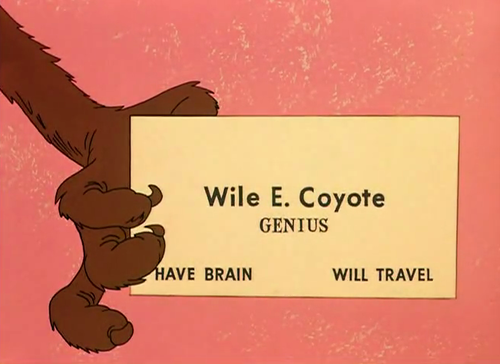
BE WILE E. COYOTE: SKILLS TO USE
MESSAGE: Wile E. Coyote always has one message that he conveys in each Bugs Bunny episode – “Allow me to introduce myself. My name is Wile E. Coyote, supergenius.” Effective, simple, and easy to remember. This is the one thing you must get across if all else fails.
OUTLINE: Create a solid, transferable, easy-to-remember methodology. Structure will help with efficiency and confidence. What are the pivotal points you need to get across?
MANIPULATE: the atmosphere and the audience’s attention
CONFIDENCE: emanate an irrefutable charisma, but not come across as cocky
CONQUER: stop being afraid. You can do it.
CONVICTION: you have to believe in yourself before others will believe in you
FINISH: Close with a BANG!
HOMEWORK: PRACTICE MAKES GREATNESS
WATCH: people who are good at speaking and notice what they do (pronunciation, speed)
DO: Practice speaking. Read story books to kids, see how engaged they are. Read spoken word poetry.
AND ALWAYS REMEMBER…
The team and audience are all rooting for you. They want you to do well. They want you to rock it. It all starts with a smile and a song.
Pitch It to Win It: 15-Second Elevator Pitching Tips from Forbes!
We’ve all heard it. The first impression. The elevator pitch. The adjustment of your voice a few tones higher. So what does it really take to capture someone’s attention in the first 15?
It sounds so easy… You just tell them about it … what’s so hard about that? But have you ever tried picking up something sitting next to you, perhaps a mirror or a cup, and trying to pitch that to someone? I certainly haven’t. So I thought, how better to learn about effectively pitching something than to research, practice, then blog about it? I literally took the closest thing to me and tried to pitch it – my tissue box, Scotties Supreme.

Forbes claims there is a method to achieve a wholesome 15 second pitch. How? Through the three-step message map consisting of the following:
- Create a Twitter-friendly headline.Can you give the gist of your product/service in one succinct sentence?
- Scotties Supreme produces various types of soft, family-friendly facial tissues.
- The sentence has the brand name, what they do, who they target, and what they provide all in one sentence.
- Support the headline with 3 key benefits. There’s a reason why it’s called the Magic Number Three! Highlight the benefits – psychologically, emotionally, spiritually, physically, mentally…
- It’s great for your nose and bum, great for the environment, and great for your wallet.
- Physical benefits, psychological benefits as well as potential to a background story, and money-saving incentives.
- Reinforce the benefits with stories, statistics, and examples. These are your “bullet points.” Since I don’t have any stats, I went with a simple sentence.
- They are dermatologist approved, packaged in 100% recycled fibre, and saves mothers lives! Yes, they support the Canadian Breast Cancer Foundation too.
- Confirmed “good-for-you” quality by authority, some proof that it’s good for the environment, and a quirky remark that generates a brief emotional attachment.
Scotties Supreme: Good for bum, good for mum. Motto ties everything I’ve mentioned into a succinct, fun and rhyming statement that’s easy to remember.
So I spent about 5 minutes reading through Scottie’s FAQ on-line, and typed out the statements in under 10 minutes. The results: my 15-second tissue pitch, which according to the video actually refers to just the first two steps, comes to a little over 8 seconds. With the addition of step 3 plus the motto I came up with, it was just under 21 seconds.
There you have it, my under 30 second pitch for Scotties Supreme tissues.
I’ll definitely have to practice this more, and hope this helps give some of you an idea of how to do it to!







